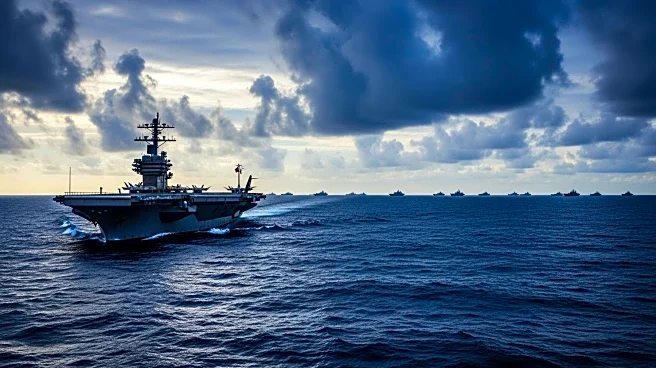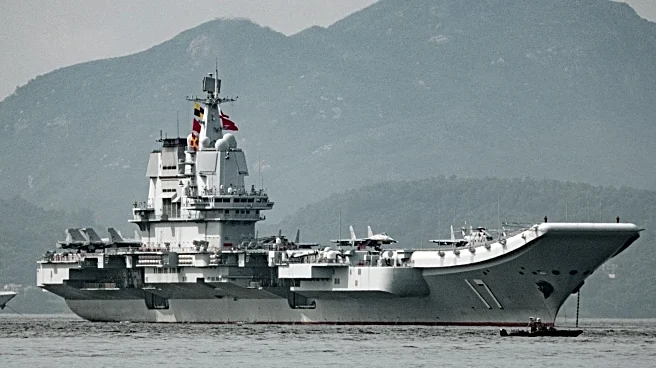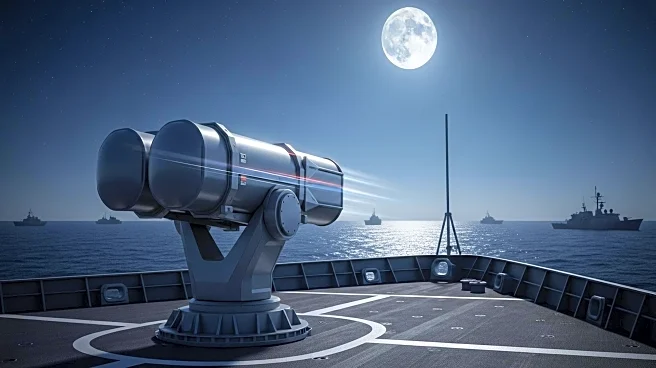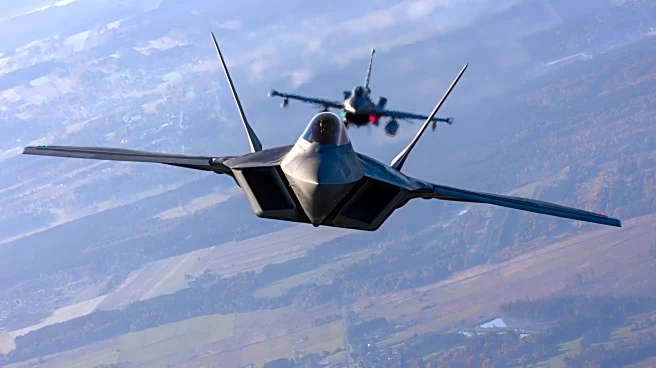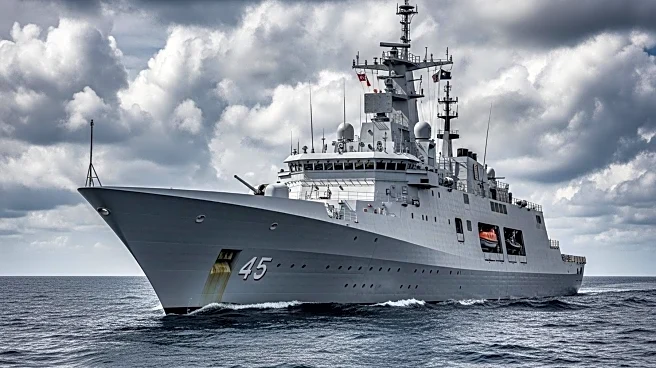What is the story about?
What's Happening?
The US Navy is confronting a strategic challenge as China plans to expand its aircraft carrier fleet to potentially six carriers by the 2030s. This development could alter the balance of naval power globally, with China's new carriers, including the catapult-equipped Fujian, nearing service. China's carrier expansion is part of a broader strategy to assert dominance in the Indo-Pacific region and protect vital trade routes. The US Navy, which currently operates eleven nuclear-powered carriers, must navigate logistical complexities to maintain its presence across multiple theaters, including the Pacific and the Middle East.
Why It's Important?
China's growing carrier fleet represents a significant shift in naval power dynamics, challenging the US Navy's long-standing dominance. The expansion could impact US strategic interests in the Indo-Pacific, prompting a reassessment of naval deployment and modernization strategies. As China enhances its maritime capabilities, regional allies such as Japan and Australia may deepen military cooperation with the US to counterbalance China's influence. The development underscores the importance of maintaining technological and operational superiority in naval forces to ensure security and stability in key regions.
What's Next?
The US Navy may need to accelerate its modernization programs to address the emerging threat posed by China's carrier expansion. This could involve investments in advanced technologies and strategic partnerships with allies to enhance collective security. Diplomatic efforts may also be necessary to manage tensions and prevent escalation in the Indo-Pacific. As China continues to develop its carrier capabilities, the US and its allies will likely monitor these advancements closely, adjusting their strategies to maintain a competitive edge.
AI Generated Content
Do you find this article useful?
